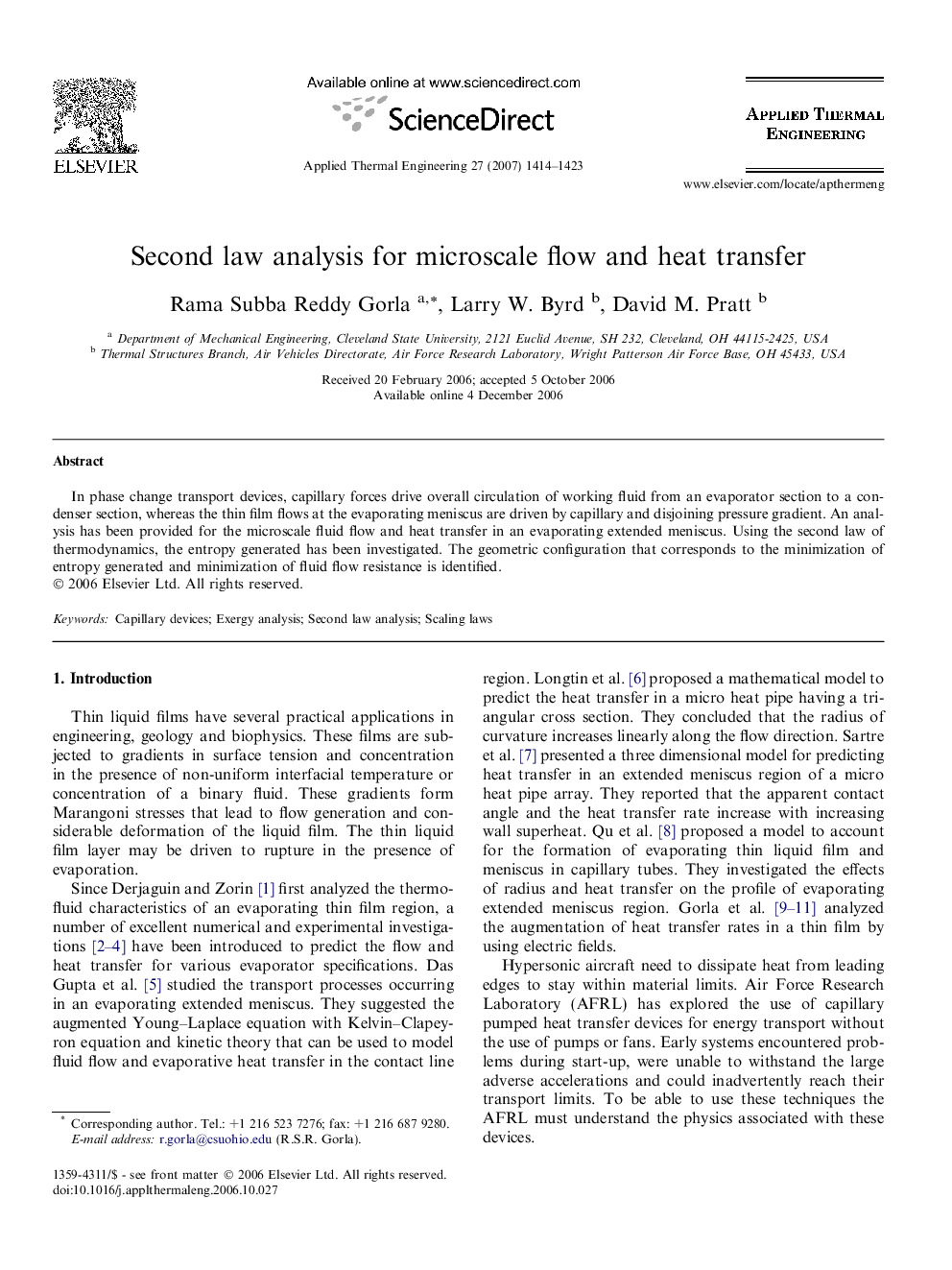| Article ID | Journal | Published Year | Pages | File Type |
|---|---|---|---|---|
| 649429 | Applied Thermal Engineering | 2007 | 10 Pages |
Abstract
In phase change transport devices, capillary forces drive overall circulation of working fluid from an evaporator section to a condenser section, whereas the thin film flows at the evaporating meniscus are driven by capillary and disjoining pressure gradient. An analysis has been provided for the microscale fluid flow and heat transfer in an evaporating extended meniscus. Using the second law of thermodynamics, the entropy generated has been investigated. The geometric configuration that corresponds to the minimization of entropy generated and minimization of fluid flow resistance is identified.
Related Topics
Physical Sciences and Engineering
Chemical Engineering
Fluid Flow and Transfer Processes
Authors
Rama Subba Reddy Gorla, Larry W. Byrd, David M. Pratt,
